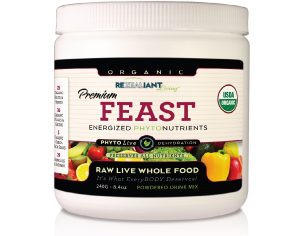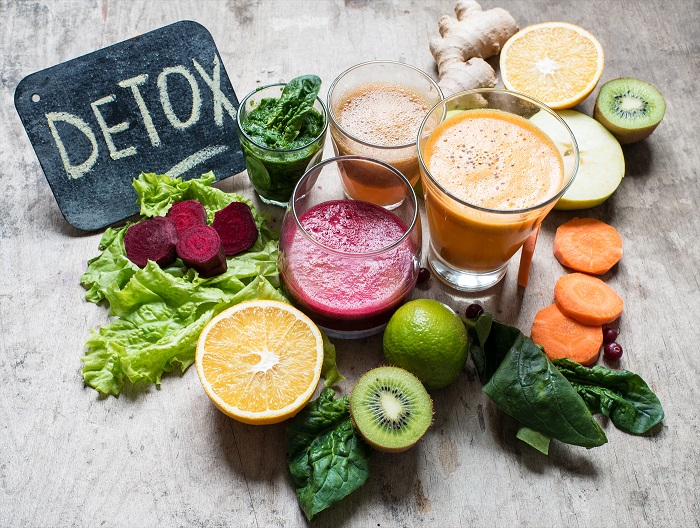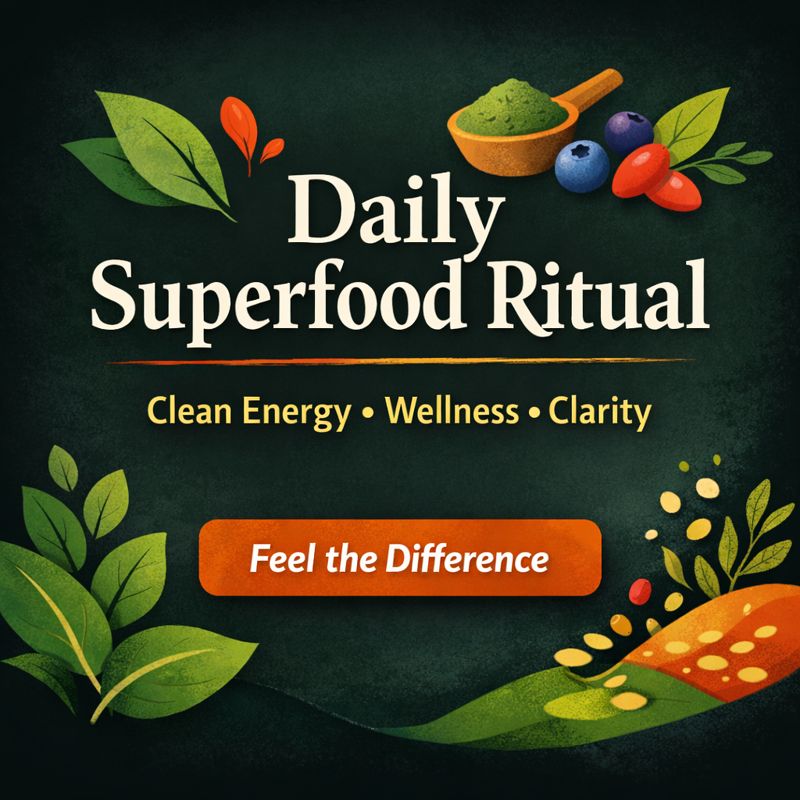Imagine a life free from the constant discomfort of joint pain, achieved not through invasive procedures or heavy medication, but through a natural and holistic detoxification process. This is not a far-fetched dream, but a reality that many have embraced and reaped immense benefits from.
Detoxing to eliminate joint pain is a transformative journey that begins with understanding the intricate connection between our body’s detoxification system and our joint health. By harnessing the power of certain foods, drinks, and lifestyle changes, we can effectively purge our bodies of harmful toxins that contribute to joint inflammation and pain.
This guide will serve as your roadmap, leading you through the fascinating science behind detoxification, the specific toxins that trigger joint pain, and the most effective detox strategies to combat them. It’s time to embark on a journey towards a pain-free life, naturally and sustainably. Welcome to your first step towards improved joint health through detoxification.

What Is Detoxing?
Detoxing, often touted as a method to eliminate toxins from your body, involves a variety of dietary and lifestyle adjustments aimed at promoting optimal health. These adjustments can help reduce inflammation, a common cause of joint pain. In the context of joint pain, detoxing could involve eliminating certain foods known to cause inflammation and replacing them with healthier alternatives.
Anti-inflammatory diets are a popular detox method. They typically involve consuming foods rich in antioxidants and anti-inflammatory compounds, such as fruits, vegetables, lean proteins, and healthy fats. These diets may also encourage the consumption of detoxifying foods like green tea and turmeric, both known for their potent anti-inflammatory properties.
Another detox method is hydration therapy. This involves drinking adequate amounts of water, herbal teas, or detoxifying juices to flush out toxins. Proper hydration can also help lubricate joints, reducing pain and inflammation.
Exercise is also a crucial part of a detox program. Regular physical activity helps stimulate the lymphatic system, which plays a key role in eliminating toxins from the body. Furthermore, certain exercises can help alleviate joint pain by improving flexibility and reducing inflammation.
Lastly, detoxing can involve lifestyle changes such as reducing stress, getting enough sleep, and avoiding environmental toxins. These changes can help create an internal environment conducive to healing, potentially reducing joint pain over time.
Remember, it’s essential to consult with a healthcare professional before starting any detox regimen. They can provide guidance based on your specific health needs and ensure the detox methods you choose are safe and effective.
Can Detoxing Reduce Joint Pain?
Detoxing, a process that aids in flushing out toxins from the body, has been linked to alleviating joint pain. The accumulation of harmful substances in the body can lead to inflammation, which is often the root cause of joint pain. By detoxing, you can potentially reduce inflammation and, consequently, joint pain.
There are numerous ways to detox your body, including healthy eating, drinking plenty of water, and engaging in regular physical activity. A diet rich in anti-inflammatory foods, such as fruits, vegetables, and lean proteins, can be particularly beneficial. Foods high in antioxidants, such as berries, can also help in the detoxification process.
Regular physical activity, in addition to promoting detoxification, can also strengthen your joints and reduce pain. Activities such as yoga and tai chi are especially beneficial due to their focus on flexibility and balance.
Drinking plenty of water is another key aspect of detoxification. Water aids in flushing toxins out of the body and is essential for joint lubrication.
• How does detoxing reduce inflammation?
Detoxing helps reduce inflammation by eliminating toxins that can trigger an inflammatory response.
While detoxing can potentially alleviate joint pain, it’s important to note that it should not replace medical treatment for chronic joint conditions, such as arthritis. Always consult with a healthcare professional before starting any new health regimen.
Remember, detoxing is just one part of a holistic approach to reducing joint pain. A balanced diet, regular exercise, adequate hydration, and proper medical care are all important aspects in managing joint pain.
What Foods Help Detoxify?
Eating certain foods can help your body detoxify and eliminate harmful toxins that cause joint pain. Foods rich in antioxidants, such as berries, nuts, and green leafy vegetables, are excellent for detoxing. They help the body combat oxidative stress, which is often a key contributor to inflammation and joint pain.
Garlic is another potent detoxifier. It contains sulfur compounds that activate liver enzymes responsible for flushing out toxins. This can aid in reducing inflammation and easing joint pain.
Foods high in omega-3 fatty acids, like chia seeds, flaxseeds, and fatty fish, are also beneficial. Omega-3s are known to reduce inflammation and may help alleviate joint pain.
Incorporating natural diuretics into your diet can aid in detoxification as well. Foods like celery, cucumber, and watermelon can help your body eliminate toxins through urination, potentially reducing joint pain.
Fermented foods such as kimchi, sauerkraut, and yogurt are rich in probiotics, promoting a healthy gut. A well-balanced gut microbiome can enhance your body’s detoxification process and may help decrease inflammation that leads to joint pain.
Lastly, drinking plenty of water is essential for detoxing. Water aids in digestion, nutrient absorption, and the elimination of waste products, all crucial for reducing inflammation and joint pain.
Remember, while these foods can aid in detoxification and potentially reduce joint pain, they should be part of a balanced diet and healthy lifestyle. It’s also important to consult with a healthcare professional before starting any new diet or detox regimen.
How Long Should I Detox?
Detoxing is a popular method used to eliminate joint pain and promote overall health. The duration of your detox largely depends on the severity of your joint pain, your overall health, and your body’s response to the detox process. Generally, a detox program can last anywhere from 3 days to 3 weeks.
A 3-day detox is usually a gentle cleanse that helps to kick-start the detoxification process. It can be beneficial for those with mild joint pain or for those who are new to detoxing.
A 7-day detox is more intensive and can be beneficial for those with moderate joint pain. This type of detox often involves a strict diet plan and the use of natural supplements to aid in the detoxification process.
For severe joint pain, a 3-week detox may be required. This is a comprehensive cleanse that aims to eliminate toxins from the body and reduce inflammation, which is often the cause of joint pain.
It’s important to note that while detoxing can help to alleviate joint pain, it should not replace traditional medical treatments. Always consult with a healthcare professional before starting any detox program to ensure it’s safe and suitable for your specific health needs.
Remember, detoxing is not a one-time solution. Regular detoxing, along with a healthy lifestyle, can help to maintain optimal health and keep joint pain at bay. It’s all about finding the right balance that works for you.
Are Detox Diets Safe?
 Detox diets, often touted as a quick solution for various health issues, including joint pain, have been a topic of much debate. Advocates claim that these diets remove toxins from the body, improving overall health and reducing inflammation that causes joint pain. However, skeptics argue that the human body already has efficient detoxification systems in place, such as the liver and kidneys.
Detox diets, often touted as a quick solution for various health issues, including joint pain, have been a topic of much debate. Advocates claim that these diets remove toxins from the body, improving overall health and reducing inflammation that causes joint pain. However, skeptics argue that the human body already has efficient detoxification systems in place, such as the liver and kidneys.
Detox diets typically involve a period of fasting, followed by a strict diet of fruits, vegetables, water, and sometimes, herbs or supplements. While this might sound appealing, it’s essential to consider the potential risks. These diets can often be restrictive and low in protein, which could lead to nutrient deficiencies and muscle loss.
Moreover, the idea that detox diets eliminate toxins from the body lacks scientific backing. Most of the weight loss experienced during a detox is often water weight, which is quickly regained once the diet is over.
While detox diets may seem like a promising way to eliminate joint pain, it’s important to remember that a balanced diet, regular physical activity, and maintaining a healthy weight are proven methods for managing joint pain and promoting overall health.
Before starting any new diet, especially a detox, it’s always best to consult with a healthcare professional. They can provide advice based on your individual health needs and ensure your safety.
In summary, while detox diets might offer temporary relief from symptoms such as joint pain, the potential risks and lack of scientific evidence supporting their efficacy make them a questionable choice for long-term health.
Can Detoxing Cause Side Effects?
Detoxing to eliminate joint pain is a popular approach. However, it’s important to be aware of potential side effects. Detoxification usually involves a strict diet and lifestyle changes, which can lead to physical and emotional side effects.
Some people experience fatigue, irritability, and headaches during the initial stages of detoxing. These symptoms are often a result of the body adjusting to a new diet and lifestyle. It’s also common to experience changes in bowel movements, such as constipation or diarrhea, as your body eliminates toxins.
While detoxing, it’s essential to maintain a balanced diet to avoid nutrient deficiencies. A lack of essential nutrients can lead to muscle weakness and other health issues.
Hydration is also crucial during detoxing. Not drinking enough water can lead to dehydration, which can exacerbate joint pain and other symptoms.
Furthermore, detoxing can also have psychological side effects. Some people might feel anxious or depressed during the detox process. This is often due to the body’s reaction to eliminating certain foods or substances.
- Fatigue and irritability
- Changes in bowel movements
- Nutrient deficiencies
- Dehydration
- Psychological side effects
While detoxing can help alleviate joint pain, it’s crucial to approach it with caution and under the supervision of a healthcare professional. They can guide you through the process and help manage any potential side effects.
What Are Natural Detox Methods?
Natural detox methods can play a significant role in alleviating joint pain. One of the most effective methods is the consumption of anti-inflammatory foods such as green leafy vegetables, berries, and fatty fish. These foods not only help detoxify the body but also reduce inflammation, a major contributor to joint pain.
Another method is hydration. Drinking plenty of fluids, especially water, helps flush out toxins from the body, thereby reducing joint pain. It’s also beneficial to limit the intake of processed foods and alcohol, as these can increase inflammation and exacerbate joint pain.
Regular exercise is also a powerful detox method. It improves circulation, aids in digestion, and promotes sweating, all of which help the body eliminate toxins. Low-impact exercises like swimming, cycling, and yoga are particularly beneficial for those suffering from joint pain.
In addition to these methods, herbal teas can also aid in detoxification. Teas like green tea, turmeric tea, and ginger tea are known for their anti-inflammatory properties and can help alleviate joint pain.
Lastly, it’s important to get adequate sleep. Sleep allows the body to repair and regenerate, which is crucial for detoxification and pain relief.
Remember, while natural detox methods can help alleviate joint pain, it’s always recommended to consult a healthcare provider before starting any new regimen.
How Often Should I Detox?
Detoxing is a popular method to eliminate toxins from the body and can be particularly beneficial for alleviating joint pain. The frequency of detoxing varies depending on individual needs, health status, and lifestyle choices.
Some health professionals suggest a gentle daily detox, which includes drinking plenty of water, consuming a diet rich in whole foods, and avoiding processed foods and harmful substances. This can support the body’s natural detoxification processes and may help reduce inflammation, a common cause of joint pain.
For a more intensive detox, it might be recommended to follow a specific detox plan for a set period, typically ranging from 3 to 14 days. These programs often involve dietary modifications, supplements, and sometimes even treatments like massages or saunas to promote toxin elimination.
However, it’s important to remember that while detoxing can help eliminate joint pain, it should not be used as a standalone treatment for chronic conditions. Always consult with a healthcare provider before starting a detox regimen to ensure it’s safe and appropriate for your specific health needs.
Remember, over-detoxing can lead to nutrient deficiencies and other health issues. So, it’s crucial to find a balance that works for your body. Regularly detoxing can be a part of a healthy lifestyle, but it should be done responsibly and in moderation.
Incorporating gentle daily detox habits can be a sustainable way to support your body’s detoxification processes, help reduce joint pain, and promote overall health and wellbeing.
A Final Word on Detoxing to Eliminate Joint Pain
In conclusion, understanding the concept of detoxing is crucial to appreciate its potential benefits in alleviating joint pain. The process involves consuming specific foods that aid in detoxification, which can lead to reduced inflammation and subsequently, less joint discomfort. However, it’s important to note that detoxing is not a one-size-fits-all solution and the duration of detox diets varies based on individual needs.
With regards to safety, while detox diets are generally safe for most, they can potentially cause side effects. Natural detox methods are a safer alternative, offering similar benefits with fewer risks. Regular detoxing, based on individual health conditions and tolerance, can contribute to overall wellbeing and joint health.
As we move forward, we anticipate further research to shed light on the intricate relationship between detoxing and joint pain, potentially uncovering more effective detox methods. Remember, before embarking on any detox regimen, it is advisable to consult with a healthcare professional. Stay informed, stay healthy, and take proactive steps towards a pain-free life.




